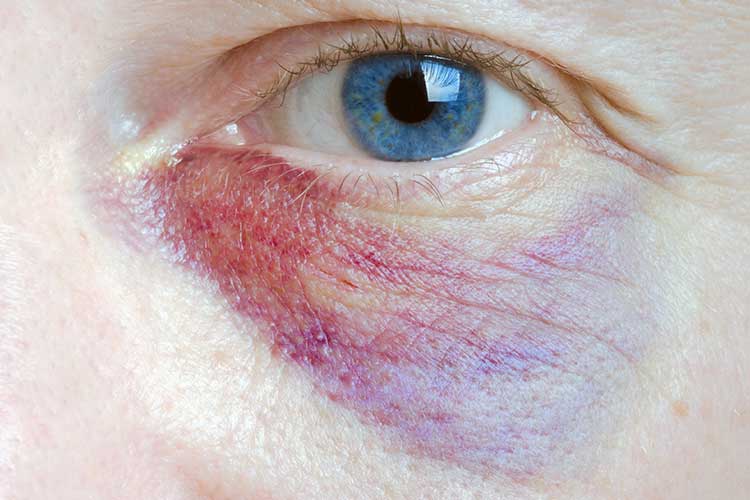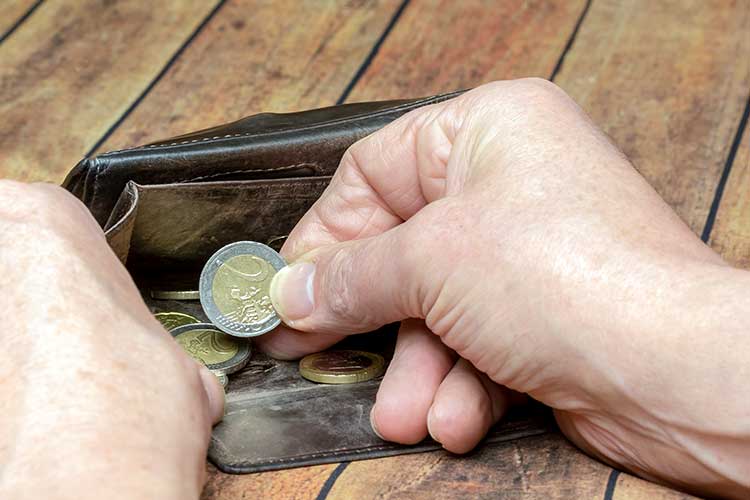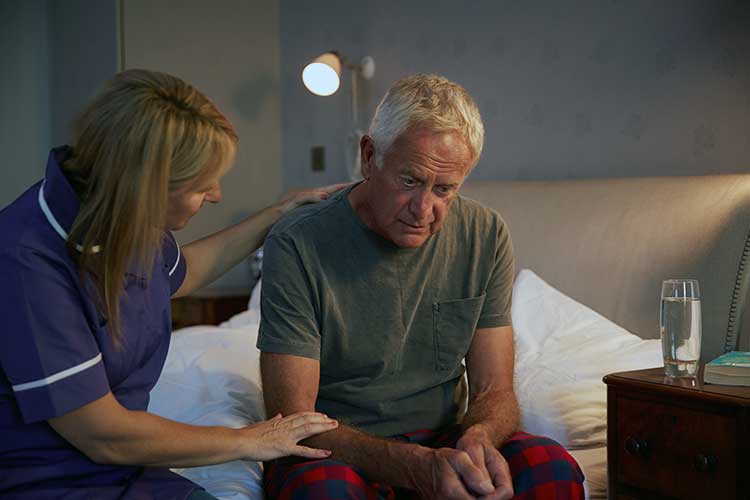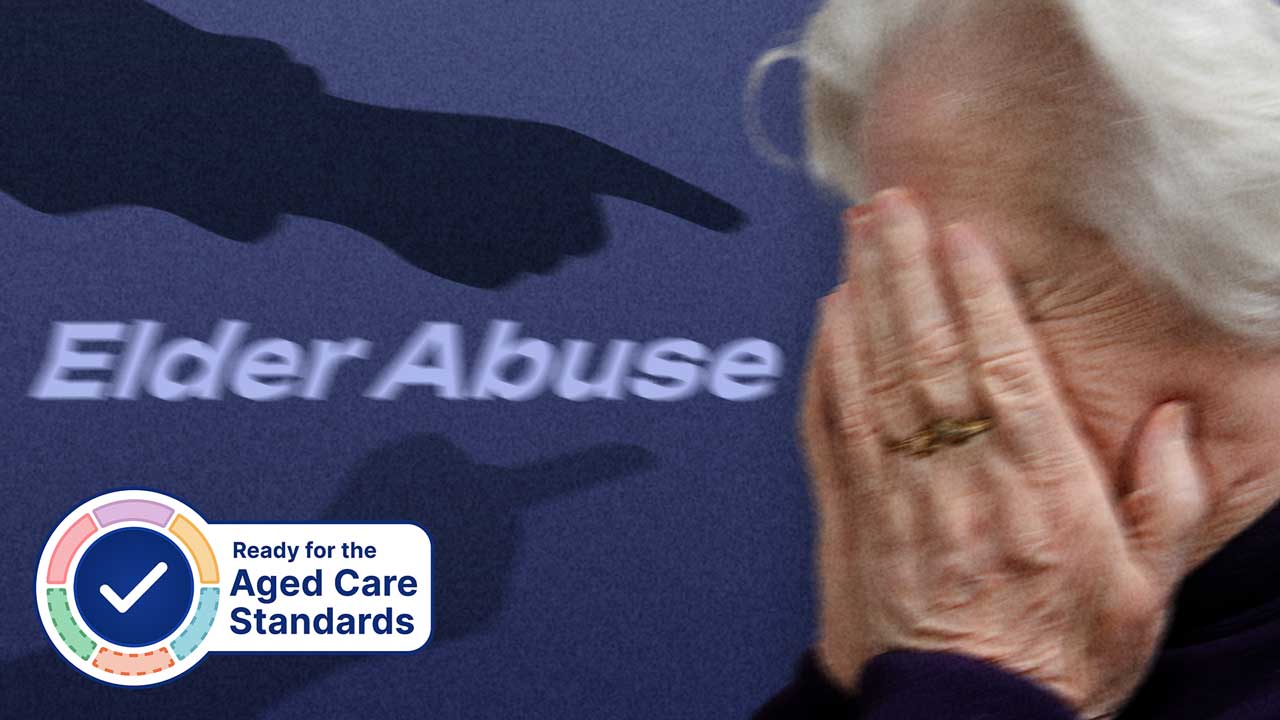Content warning: Please be aware that this Article contains graphics and information relating to abuse, which some people may find distressing.
This module will be reviewed pending the release of the Aged Care Quality and Safety Commission’s release of updated SIRS guidance material, which Ausmed is actively monitoring.
Any person receiving care - regardless of age, gender or disability - should be able to access support without experiencing (or fearing) violence, abuse, neglect, exploitation or discrimination.
Abusive behaviour of any kind towards older adults (from staff, residents or others) is a violation of basic human rights and unacceptable in any setting (Better Health Channel 2015).
The following article outlines different forms of elder abuse behaviour so that you can recognise the signs and take action.
What is Elder Abuse?
The term elder abuse describes any kind of failure to act or intentional act that causes harm to an older person and is performed by a person the older adult knows and trusts (Seniors Rights Victoria 2021a).
The perpetrator could be a:
- Family member
- Friend
- Lawyer
- Accountant
- Neighbour
- Healthcare worker or carer.
(Seniors Rights Victoria 2021a; AIFS 2019)
In most cases, elder abuse is intentional. It can range in severity from verbal harassment to the infliction of serious physical injury, and also includes acts such as stealing from an older person or isolating them from their loved ones (Seniors Rights Victoria 2021a).
In many cases of elder abuse, the older person is dependent on the abuser, the abuser is dependent on the older person, or both people are dependent on each other (Seniors Rights Victoria 2021a).
Elder Abuse Under the Strengthened Aged Care Quality Standards
Standard 1: The Person - Outcome 1.2: Dignity, respect and privacy (Action 1.2.1) of the strengthened Aged Care Quality Standards requires providers to enforce a system that identifies, prevents and addresses violence, abuse, racism, neglect, exploitation and discrimination (ACQSC 2024).
Statistics on Elder Abuse in Australia
In 2020, the Royal Commission into Aged Care Quality and Safety estimated that almost 40% of aged care residents experience neglect, emotional abuse or physical abuse.
More specifically:
- 30.8% of aged care residents are estimated to experience neglect
- 22.6% of aged care residents are estimated to experience emotional abuse, and
- 5% of aged care residents are estimated to experience physical abuse.
(RCACQS 2020)
According to the Royal Commission, the abuse being experienced by aged care residents includes:
| Neglect |
|
| Emotional abuse |
|
| Physical abuse |
|
Types of Elder Abuse
Physical Abuse
This might include:
- Kicking
- Slapping/hitting/punching/pinching
- Burning
- Pushing/shoving/shaking
- Choking
- Restraining
- Over-medicating
- Rough handling.
(Seniors Rights Victoria 2021b; SA Health 2016)

Sexual Abuse
Sexual abuse refers to any sexual activity that takes place without an older person’s consent. It does not necessarily involve penetration or physical contact (Rivers 2024; RACGP 2022).
Examples of sexual abuse include:
- Sexual assault
- Sexual contact or touching
- Sexual harassment, for example, being forced to watch pornography, sexual acts or exhibitionism
- Coerced nudity
- Inappropriate cleaning or treatment in the person's genital area
- Not giving the person privacy when they bathe.
(Seniors Rights Victoria 2021b; SA Health 2016; Rivers 2024)
Emotional/Psychological Abuse
Emotional or psychological abuse is when an abuser threatens, humiliates or harasses an older person, causing them to feel distressed, ashamed, stressed or powerless. Emotional abuse often occurs in combination with other types of abuse (Seniors Rights Victoria 2021a).
Examples of emotional abuse include:
- Pressuring, bullying, intimidating, humiliating or infantilising the person
- Making threats of harm to the person, their property, pets and/or other people
- Verbally assaulting the person, for example, name-calling, shouting, ridiculing, belittling or cursing
- Isolating the person from their friends and family, or from others who speak their language
- Withholding the person’s right to privacy
- Disrespect
- Deprivation of access to appropriate clothing, hygiene or toileting.
(Seniors Rights Victoria 2021b; SA Health 2016)
Social Abuse
Social abuse is when an abuser forcefully isolates an older person from other people, such as family, friends and health services. This may prevent the older person from seeking help about the abuse they are experiencing (Seniors Rights Victoria 2021a).
Examples of social abuse include:
- Preventing the person from contacting their family and friends
- Not allowing the person to go outside their home, room or accommodation facility
- Restricting access to the person’s car, transportation, mobility aids etc.
- Withholding the person’s mail
- Preventing the person from making phone calls, or listening in to their calls
- Preventing the person from being involved in social, community, religious, cultural or spiritual activities.
(Seniors Rights Victoria 2021b; 1800RESPECT 2017)
Neglect
Neglect occurs when an abuser intentionally fails to provide an older person with basic life necessities. This includes failing to take actions that would prevent the older adult from coming to harm, for example, not allowing an older person to attend a medical appointment (Seniors Rights Victoria 2021a, b; ACQSC 2022).
Examples of neglect include failure to provide:
- Food or drinks
- Warmth
- Adequate housing
- Appropriate clothing for the environment
- Medical care, treatments or access to health services
- Medications
- Medical aids, including glasses, dentures, hearing aids and walking frames
- Means for good hygiene (for example, neglecting to assist the person with bathing, toileting or oral care)
- Adequate supervision
- Care in line with the person’s care plan.
(Seniors Rights Victoria 2021a, b; ACQSC 2022)
Financial Abuse
Financial abuse is when an abuser uses an older person’s money, property or other assets illegally or improperly, or forces or coerces the older person to change their will or sign particular documents.
Examples of financial abuse include:
- Misuse of legal powers such as power of attorney or enduring power of attorney
- Forced changes to legal documents such as a will
- Stealing money or property from an older person
- Withholding money
- Coercion, deception or undue influence (for example, coercing the person into signing a document)
- Misappropriation of funds, property and valuables (for example, using the person’s credit card without their permission)
- Financial scams
- Identity theft
- Standover tactics to manipulate the older person to hand over money and assets.
(Seniors Rights Victoria 2021b; SA Health 2016)

Discrimination
Discrimination is the mistreatment or bullying of an older person based on their personal characteristics (or presumed characteristics). These characteristics can include (but are not limited to) gender identity, age, sexual orientation, disability, employment, race or religious belief (Victorian Equal Opportunity & Human Rights Commission 2020).
Policies, Legislation and Services for Preventing Abuse
Your organisation must establish clear policies and procedures to protect older people from abusive behaviour. It’s also important to maintain a workplace culture that promotes positive values, experience and attitudes and is transparent about its processes (NDS 2017).
In addition to individual organisations’ policies and procedures, there are other mechanisms in place to help protect older people from abuse. These include:
- The strengthened Aged Care Quality Standards
- The Charter of Aged Care Rights
- The Aged Care Act 1997
- The Serious Incident Response Scheme
- Other state and territory legislation.
The Older Persons Advocacy Network (OPAN), which is contracted by the Australian Government, provides free, independent and confidential advocacy services to aged care clients (ACQSC 2022).
The Serious Incident Response Scheme (SIRS)
Read: What is the Serious Incident Response Scheme (SIRS)?
The Serious Incident Response Scheme (SIRS), which commenced in April 2021, is a federal government initiative aiming to reduce the risk of abuse and neglect in Commonwealth-funded residential aged care. It expands upon the protections offered by the Aged Care Act 1997 (ACQSC 2022c; Ausmed 2023).
Under the SIRS, Commonwealth-funded residential aged care providers are required to identify, record, manage and resolve all serious incidents, which include:
- Unreasonable use of force
- Unlawful sexual contact or inappropriate sexual conduct
- Neglect
- Psychological or emotional abuse
- Unexpected death
- Stealing or financial coercion by a staff member
- Inappropriate use of use of restrictive practices
- Unexplained absence from care.
(ACQSC 2022c)
These incidents, along with any allegation, suspicion, or witness account of these incidents, must be reported to the Aged Care Quality and Safety Commission (ACQSC 2022c).

Recognising the Signs of Abusive Behaviour
Older people experiencing abusive behaviour may not seek help due to fear, guilt, shame, lack of capacity or lack of knowledge about the resources available to them (Better Health Channel 2018).
Therefore, it is important to be able to recognise the signs of abuse in case the older person does not disclose it. Signs may include, but are not limited to:
- Malnutrition or dehydration
- Poor personal hygiene or dirty clothes
- Untreated medical issues
- Fearful, anxious or withdrawn behaviour
- Unexplained and frequent injuries
- Unexplained cuts or bruises on the genitals or anus
- Unexplained sexually transmitted infections
- Sudden and unexpected changes in financial status.
(Better Health Channel 2018)
For a more comprehensive list of signs of elder abuse, see Ausmed’s Training Module on Elder Abuse.
Responding to Abuse
Your organisation should have clear policies and procedures for responding to abuse. All staff should be familiar with these frameworks and their duty of care to those in their care (Seniors Rights Victoria 2021c).
Healthcare workers may be the first people to notice or suspect abuse. If you suspect abuse:
- Do not ignore the situation
- Be respectful of the older person’s rights and wishes
- Contact emergency services if there is an immediate threat of harm
- Gather information by asking the person non-judgmental, direct and open questions in a sensitive manner
- Record details in writing, including anything you may have seen or heard. This must be confidential
- Notify your supervisor.
(Seniors Rights Victoria 2021c)

Conclusion
All older people have the right to receive care without abuse or fear of abuse. Abuse is never acceptable in the workplace. Ensure you can recognise the signs of abuse and always take action if you suspect an older person is being harmed.
Useful Organisations
Test Your Knowledge
Question 1 of 3
Jeff works at an aged care facility. His favourite client to visit is Mary, with whom he has a good rapport. However, whenever Jeff sees Mary interacting with another staff member, he gets very upset and berates Mary for ‘betraying’ him. What kind of abuse is this?
Topics
References
- 1800RESPECT 2017, Social Abuse, 1800RESPECT, viewed 3 April 2024, https://www.1800respect.org.au/violence-and-abuse/social-abuse
- Aged Care Quality and Safety Commission 2022b, Aged Care Advocacy - Fact Sheet, Australian Government, viewed 3 April 2024, https://www.agedcarequality.gov.au/resources/aged-care-advocacy-fact-sheet
- Aged Care Quality and Safety Commission 2024, Standard 1: The Individual, Australian Government, viewed 3 April 2024, https://www.health.gov.au/resources/publications/strengthened-aged-care-quality-standards-august-2025?language=en
- Aged Care Quality and Safety Commission 2022a, Reportable Incidents: Neglect, Australian Government, viewed 3 April 2024, https://www.agedcarequality.gov.au/sites/default/files/media/sirs-neglect-fact-sheet_0.pdf
- Aged Care Quality and Safety Commission 2022c, Serious Incidents, ACQSC, Australian Government, viewed 3 April 2024, https://www.agedcarequality.gov.au/older-australians/safety-care/serious-incidents
- Ausmed Editorial Team 2023, ‘What is the Serious Incident Response Scheme (SIRS)?’, Ausmed, 18 July, viewed 3 April 2024, https://www.ausmed.com.au/cpd/articles/serious-incident-response-scheme
- Australian Institute of Family Studies 2019, Elder Abuse, Australian Government, viewed 3 April 2024, https://aifs.gov.au/resources/policy-and-practice-papers/elder-abuse
- Better Health Channel 2018, Elder Abuse, Victoria State Government, viewed 3 April 2024, https://www.betterhealth.vic.gov.au/health/servicesandsupport/elder-abuse
- Better Health Channel 2015, People with a Disability who Experience Violence, Abuse or Neglect, Victoria State Government, viewed 2 April 2024, https://www.betterhealth.vic.gov.au/health/ServicesAndSupport/people-with-a-disability-who-experience-violence-abuse-or-neglect?viewAsPdf=true
- National Disability Services 2017, Preventing Abuse, NDS, viewed 3 April 2024, https://www.nds.org.au/zero-tolerance-framework/preventing-abuse
- Rivers, J 2024, Types of Elder Abuse, Nursing Home Abuse Center, viewed 3 April 2024, https://www.nursinghomeabusecenter.com/elder-abuse/types/
- Royal Australian College of General Practitioners 2022, Abuse and Violence: Working With our Patients in General Practice, 5th edn, RACGP, viewed 3 April 2024, https://www.racgp.org.au/getattachment/4ab6102c-67d9-4440-9398-a3ae759164ef/Abuse-and-violence-Working-with-our-patients-in-general-practice.aspx
- The Royal Commission Into Aged Care Quality and Safety 2020, Research Paper 17 – Experimental Estimates of the Prevalence of Elder Abuse in Australian Aged Care Facilities, Australian Government, viewed 3 April 2024, https://apo.org.au/node/310218
- SA Health 2016, Elder Abuse, Signs and Indicators, Government of South Australia, viewed 3 April 2024, https://www.sahealth.sa.gov.au/wps/wcm/connect/f13feb004a1e14f088dce890d529bdaa/Elder+Abuse+-+Abuse+signs+and+indicators.pdf?MOD=AJPERES&CACHEID=ROOTWORKSPACE-f13feb004a1e14f088dce890d529bdaa-nwLMGxH
- Seniors Rights Victoria 2021b, Signs of Elder Abuse?, Seniors Rights Victoria, viewed 3 April 2024, https://seniorsrights.org.au/resources/elder-abuse-toolkit/signs-of-elder-abuse/
- Seniors Rights Victoria 2021a, What is Elder Abuse?, Seniors Rights Victoria, viewed 3 April 2024, https://seniorsrights.org.au/resources/elder-abuse-toolkit/what-is-elder-abuse/
- Seniors Rights Victoria 2021c, Supporting Someone Who has Experienced Abuse, Seniors Rights Victoria, viewed 3 April 2024, https://seniorsrights.org.au/resources/elder-abuse-toolkit/supporting-someone-who-has-experienced-abuse/
- Victorian Equal Opportunity & Human Rights Commission 2020, Types of Discrimination, Victorian Equal Opportunity & Human Rights Commission, viewed 3 April 2024, https://www.humanrights.vic.gov.au/for-individuals/discrimination/
 New
New 
